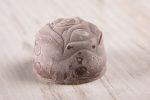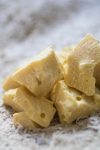Sal (Shorea robusta) vegetable fat is a potential substitute for cocoa butter in various food applications, particularly in the chocolate industry. Shorea robusta, commonly known as Sal, is an evergreen tree native to the Indian subcontinent and Southeast Asia. The fat extracted from Sal seeds has similar physical and chemical properties to cocoa butter, making it an attractive alternative for manufacturers seeking to reduce their dependence on cocoa butter due to factors such as price fluctuations, supply constraints, and sustainability concerns. It is interesting to see how it this vegetable fat works as a cocoa butter fat replacer.
Physical Properties
Sal vegetable fat exhibits similar physical characteristics to cocoa butter, including a desirable melting profile and solid fat content. This similarity allows it to mimic the texture, mouthfeel, and melting behavior of cocoa butter in chocolate products. Sal fat can be processed to achieve specific melting points and hardness levels, making it versatile for use in various chocolate formulations.
Chemical Composition
Sal fat is primarily composed of triglycerides, similar to cocoa butter. It contains a combination of saturated, monounsaturated, and polyunsaturated fatty acids, contributing to its solid-at-room-temperature consistency and melting properties. The fatty acid profile of Sal fat can be manipulated through fractionation or blending to optimize its compatibility with cocoa butter and other fats in chocolate formulations.
Functional Properties
Sal fat functions as an effective cocoa butter replacer in chocolate manufacturing, providing lubrication, mouthfeel, and flavor release comparable to cocoa butter. It can be used in combination with other vegetable fats or cocoa butter equivalents to achieve the desired texture and sensory attributes in chocolate products. Sal fat also offers good heat stability and resistance to oxidation, ensuring the shelf life and quality of chocolate confections.
Cost and Availability
Sal fat may offer cost advantages compared to cocoa butter, especially in regions where Sal trees are cultivated and processed. The availability of Sal fat as a byproduct of timber industries or dedicated oil extraction facilities can provide a sustainable and economically viable alternative to cocoa butter, particularly in regions with limited access to cocoa cultivation.
Sustainability
Utilizing Sal fat as a cocoa butter replacer can contribute to sustainability initiatives in the chocolate industry. Sal trees are native to tropical forests and are often cultivated in agroforestry systems, promoting biodiversity and ecological resilience. By diversifying fat sources and reducing reliance on cocoa butter, manufacturers can mitigate environmental impacts associated with cocoa cultivation, such as deforestation, habitat loss, and monoculture farming practices.
Regulatory Considerations
Before using Sal fat or any alternative fat in chocolate products, manufacturers must ensure compliance with regulatory standards and labeling requirements. Food safety authorities may require testing and approval of novel fat sources for use in chocolate manufacturing. Additionally, accurate labeling and transparency regarding fat sources are essential to inform consumers about ingredient substitutions and potential allergens.
Sal (Shorea robusta) vegetable fat holds promise as a cocoa butter replacer in chocolate manufacturing. Its physical and chemical properties, functional attributes, cost-effectiveness, sustainability, and regulatory considerations make it a viable alternative for diversifying fat sources and enhancing the resilience of the chocolate industry. Further research and development efforts are warranted to optimize the formulation and application of Sal fat in chocolate products, ensuring consumer acceptance and market competitiveness.


Leave a Reply